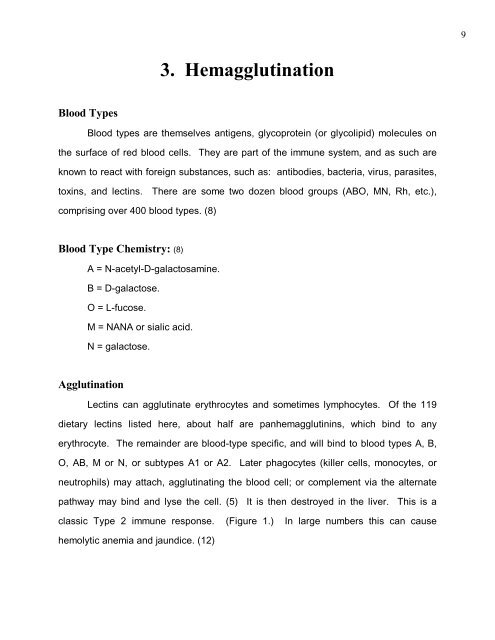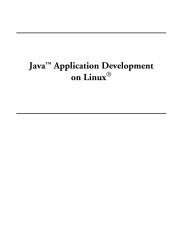Introduction In recent years, there has been considerable ... - Dator
Introduction In recent years, there has been considerable ... - Dator
Introduction In recent years, there has been considerable ... - Dator
You also want an ePaper? Increase the reach of your titles
YUMPU automatically turns print PDFs into web optimized ePapers that Google loves.
93. HemagglutinationBlood TypesBlood types are themselves antigens, glycoprotein (or glycolipid) molecules onthe surface of red blood cells. They are part of the immune system, and as such areknown to react with foreign substances, such as: antibodies, bacteria, virus, parasites,toxins, and lectins. There are some two dozen blood groups (ABO, MN, Rh, etc.),comprising over 400 blood types. (8)Blood Type Chemistry: (8)A = N-acetyl-D-galactosamine.B = D-galactose.O = L-fucose.M = NANA or sialic acid.N = galactose.AgglutinationLectins can agglutinate erythrocytes and sometimes lymphocytes. Of the 119dietary lectins listed here, about half are panhemagglutinins, which bind to anyerythrocyte. The remainder are blood-type specific, and will bind to blood types A, B,O, AB, M or N, or subtypes A1 or A2. Later phagocytes (killer cells, monocytes, orneutrophils) may attach, agglutinating the blood cell; or complement via the alternatepathway may bind and lyse the cell. (5) It is then destroyed in the liver. This is aclassic Type 2 immune response. (Figure 1.) <strong>In</strong> large numbers this can causehemolytic anemia and jaundice. (12)














